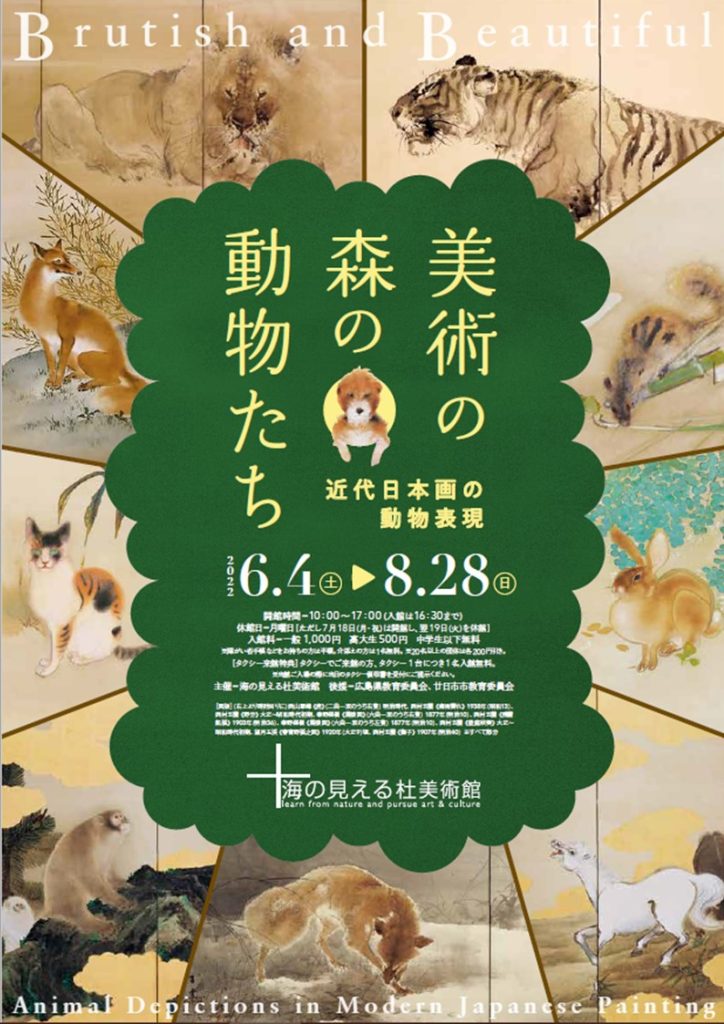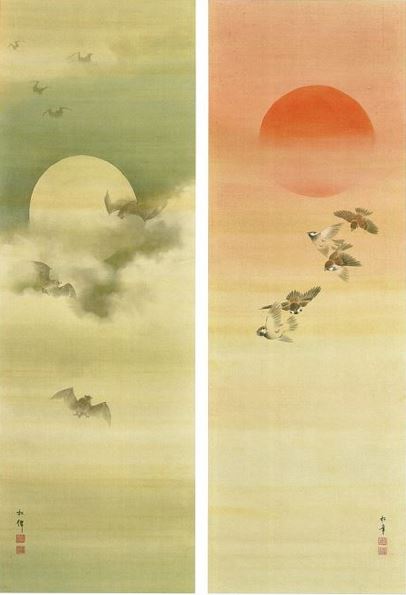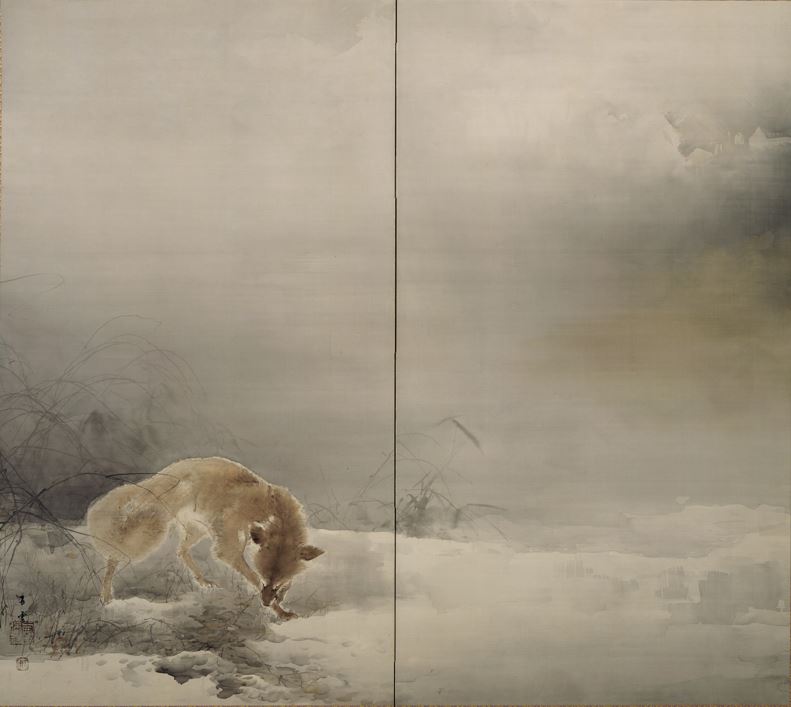Exhibitions
Brutish and Beautiful: Animal Depictions in Modern Japanese Painting

From ancient times, Japanese artists were drawn to animals by their mysterious powers and auspicious meanings, by their beauty and cuteness, or by an interest in natural history. These traditions continued into the Meiji era, though animal paintings evolved as artists began to observe animals in a new light. As they strove to capture the essence and real nature of animals, painters now depicted the creatures as they really appeared, for instance, or the seasons as observed through the changing flora and fauna.
These tendencies are most clearly on display in the lion paintings that the Kyoto artist Takeuchi Seiho (1864–1942) produced after travelling to Europe in 1900 to observe the magnificent beasts in real life. Takeuchi established an art school that gave students a thorough grounding in painting from nature. It thus became commonplace among Takeuchi’s contemporaries to paint based on observations, rather than relying on examples set by painters from the past. Artists also got more opportunities to view exotic animals up close when several zoos were established across Japan in a building boom that also included a flurry of new museums and galleries. Meanwhile, other works imbued animals with feelings like joy or suffering, while several artists used the vivid form of animals to express their own emotions. Sakakibara Shiho’s (1887–1971) Lion conveys a different reality to Takeuchi’s lions with its depiction of suffering in the face of gnawing hunger, for example, while the animals that prowl the landscapes in Ikeda Yoson’s works (1895–1988) are said represent the artist’s alter egos.
This exhibition features an overview of animal paintings, predominantly from the Meiji era to Showa era. They explore the way animals were viewed and the significance of animal paintings from the early-modern period onwards. Please enjoy the richly varied forms of the animals that inhabit this forest of art.

Chapter 1. Animals and the Imagination
Animals and the Imagination
Animals have featured in Japanese art since ancient times. Many paintings portray animals as replete with mysterious powers or auspicious meanings. Fierce dragons and tigers are shown summoning the wind and clouds, for example, while long-living cranes and turtles symbolize longevity. It seems the artistic imagination was roused by the varied appearances and traits of animals. These rich flights of fancy were shared widely and transformed into art that adorned sliding doors, folding screens and hanging scrolls, for instance
This chapter introduces depictions of animal suffused with special significance. Produced from the end of the Edo period to the modern age, these paintings provide a glimpse into a relation between humans and animals that has faded with time.

1877 (Meiji 10)

Meiji period
Chapter 2. Naturalistic Depictions of Animals
Since olden times, many artists have aspired to paint animals as they truly are. From the Edo period, several Japanese painters tried to paint animals based on observations of nature. This proved difficult when it came to lions, tigers and other animals not native to Japan. For a long time, artists had no way to observe these beasts in person and instead had to reference works by others. For Japanese artists, these were akin to imaginary creatures.
However, things gradually began to change in the Meiji era as Western culture flowed into Japan. Takeuchi Seiho travelled to Europe to see lions for himself. He made sketches of them and his subsequent paintings caused a furor back home. The aim of Seiho and other modern painters was to represent animals in a naturalistic fashion based on close observation – to avoid lavish beautified portrayals and instead depict them as living, breathing creatures. This chapter introduces animal paintings by Seiho and other artists from the modern Kyoto art world.


Meiji period
Chapter 3. Expressing the Emotions Through Animals
While some artists pursued naturalistic animal depictions, right down to the feel of fur, others painted heartrending scenes of animals battling hunger or enduring cold. These artists focused on the sorrows and joys of nature, from the shivery depths of isolation and solitude to the warm bonds animals share with each other and their owners. This approach was markedly different from the tradition of portraying horses, monkeys, cranes and turtles for their auspicious meanings. Some painters also used animals to express their own feelings and emotions, with Ikeda Yoson saying the creatures in his landscapes were his ‘alter egos,’ for example. Through these works, artists strove to capture the very being and essence of animals through art.

1903 (Meiji 36)


